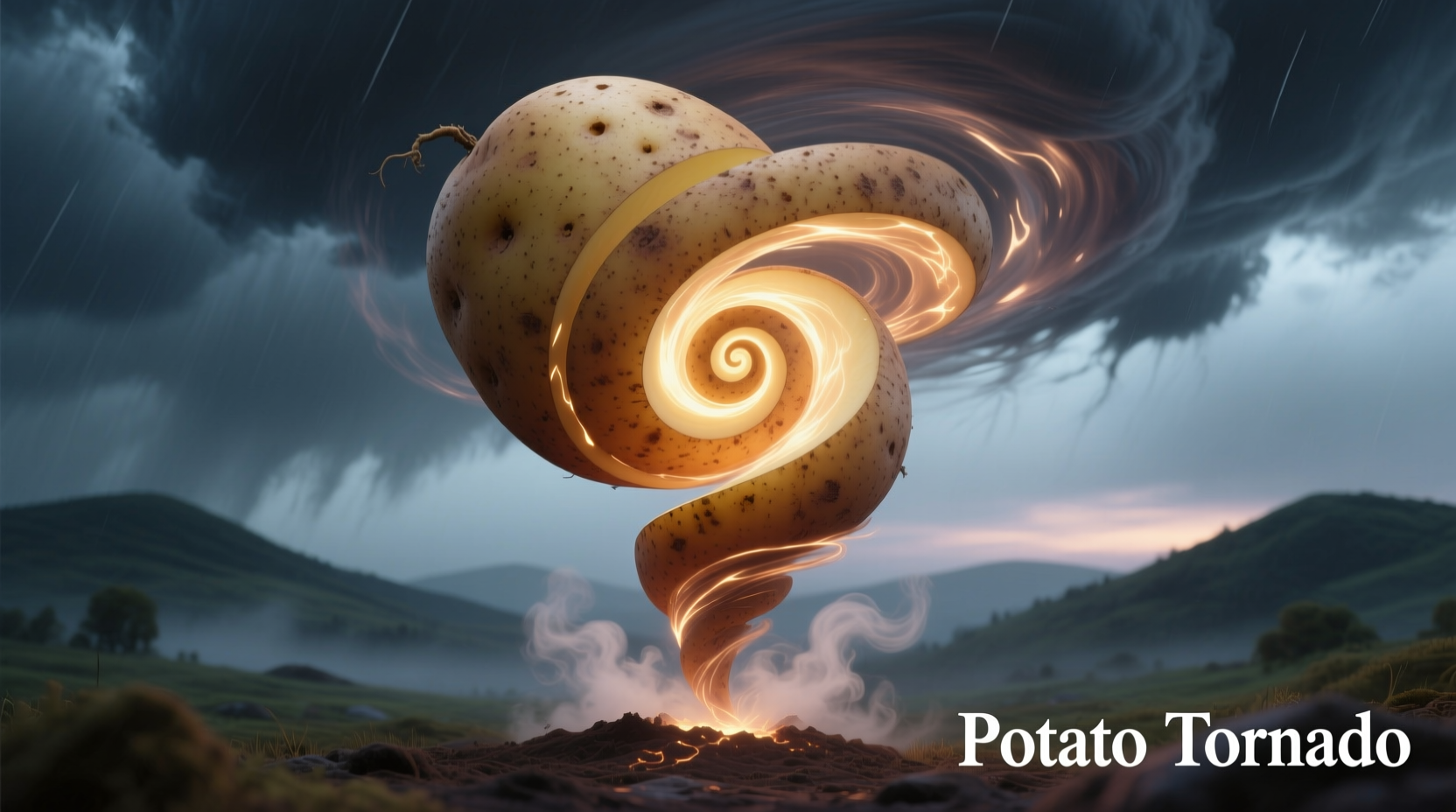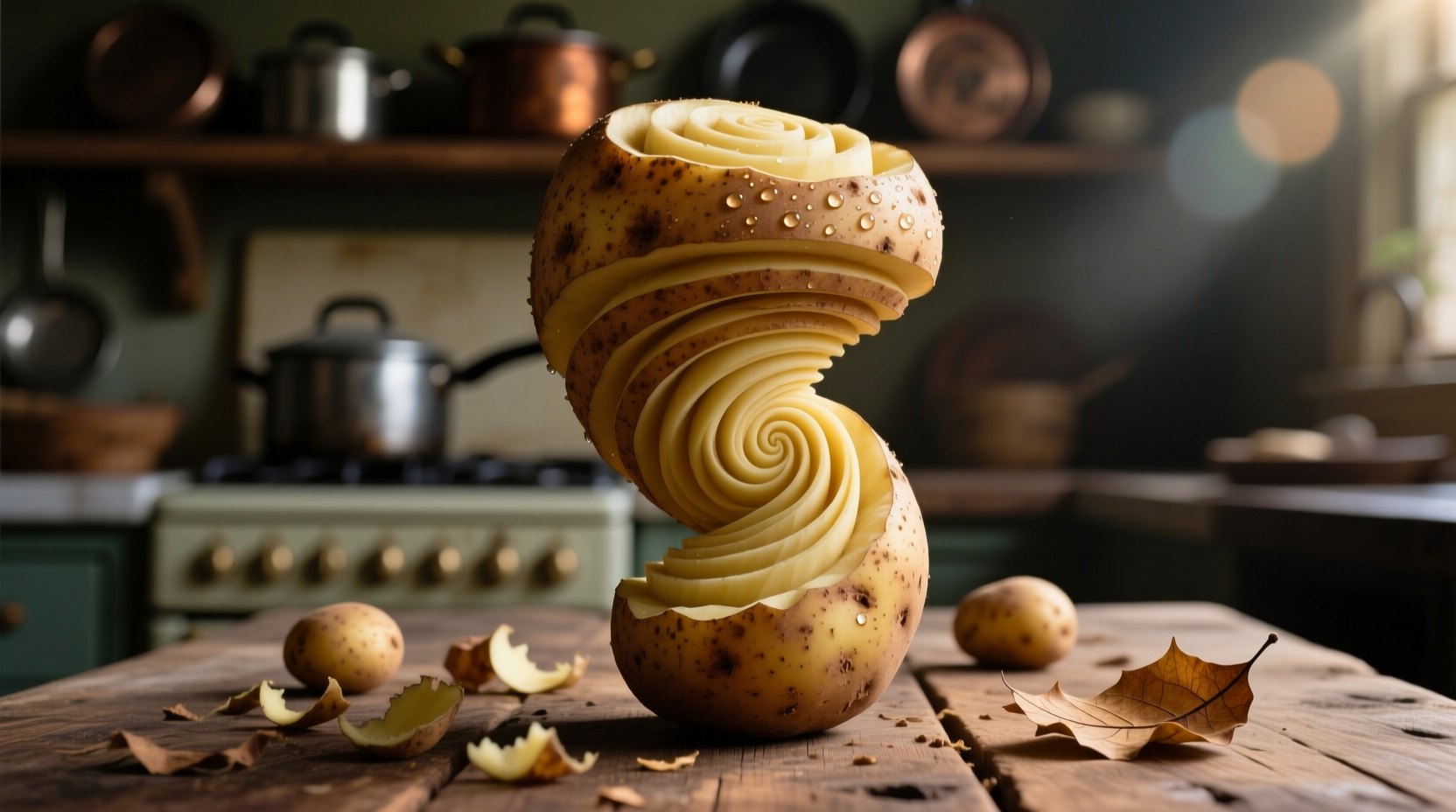What Exactly Is a Tornado Potato?
When you encounter a tornado potato, you're looking at a culinary innovation that transforms an ordinary potato into an extraordinary edible sculpture. The process involves mounting a whole potato onto a specialized spiral cutter that creates continuous, helical cuts through the entire vegetable. When fried, these cuts expand outward, creating the signature tornado-like appearance with individual strands that separate during cooking.
Unlike traditional french fries or potato wedges, tornado potatoes maintain their structural integrity as a single unit while offering maximum surface area for crispiness. The result is a textural experience that combines the fluffy interior of a baked potato with the satisfying crunch of perfectly fried potato strands.
From Street Food Phenomenon to Global Sensation: The Evolution Timeline
Tornado potatoes didn't emerge from professional kitchens but rather from street food innovation. Understanding their journey helps appreciate why they've captured global attention:
| Time Period | Development | Geographic Spread |
|---|---|---|
| 2005-2007 | Initial concept developed in South Korea using modified corn cob holders | Limited to Korean street markets |
| 2008-2010 | Specialized spiral cutters invented; recipe variations emerge | Spread to China, Japan, and Southeast Asia |
| 2011-2013 | International food festivals feature tornado potatoes | Appears in European street markets and American state fairs |
| 2014-Present | Home preparation kits become widely available; social media popularity surge | Global phenomenon with regional flavor adaptations worldwide |
How Tornado Potatoes Differ From Other Potato Preparations
While all potato dishes share the same humble base ingredient, tornado potatoes offer a unique experience that sets them apart from conventional preparations. The distinctive spiral cutting technique creates structural and textural differences that affect both preparation and eating experience.
Traditional french fries require uniform cutting, soaking, and multiple frying stages to achieve crispness without sogginess. Potato wedges maintain structural integrity but offer limited surface area for crispiness. In contrast, tornado potatoes maximize surface area while maintaining a single edible unit that's easy to handle without utensils.

When Tornado Potatoes Shine: Ideal Contexts and Limitations
Understanding where tornado potatoes excel—and where they might not be the best choice—helps you incorporate them effectively into your culinary repertoire. These spiral-cut delights work particularly well in specific contexts while having certain limitations to consider.
Ideal applications:
- Festival and street food settings where visual appeal matters
- Casual dining experiences that benefit from interactive food
- Family meals where presentation encourages vegetable consumption
- Special occasions needing conversation-starting centerpieces
Practical limitations:
- Not suitable for meal prep due to texture degradation
- Requires immediate consumption for optimal crispness
- Specialized equipment needed for authentic preparation
- Less efficient for feeding large groups compared to traditional fries
Creating Perfect Tornado Potatoes at Home: A Step-by-Step Guide
While street vendors have perfected tornado potato preparation, you can achieve excellent results in your own kitchen with the right approach. The key to success lies in potato selection, proper cutting technique, and precise frying conditions.
Potato selection matters most: Choose medium-sized russet or Yukon Gold potatoes (6-8 ounces) with uniform shape and minimal eyes. Larger potatoes tend to break apart during cutting, while smaller ones don't provide enough visual impact. The ideal potato should feel firm with smooth skin—avoid any with green spots or soft areas.
Essential equipment alternatives: While specialized tornado potato cutters work best, you can create a similar effect with:
- A sharp knife and steady hand for manual spiral cutting
- A mandoline slicer with spiral attachment
- A drill-powered potato spiralizer (with proper safety precautions)
Frying technique secrets: Heat oil to precisely 350°F (175°C) in a deep fryer or heavy pot. Lower the spiral-cut potato gently into the oil, holding the skewer. Fry for 3-4 minutes until golden brown, gently shaking the skewer occasionally to separate the strands. Drain vertically on a wire rack to maintain shape and crispness.
Flavor Variations and Creative Serving Ideas
One reason for tornado potatoes' global popularity is their incredible versatility. The basic preparation serves as a canvas for endless flavor combinations that can transform this simple street food into a sophisticated culinary experience.
Classic seasoning combinations:
- Traditional street style: Sea salt, garlic powder, and paprika
- Korean-inspired: Gochujang sauce drizzle with sesame seeds
- Mexican fusion: Tajín seasoning with lime zest and cotija cheese
- Herb garden: Rosemary, thyme, and olive oil infusion
For special dietary needs, tornado potatoes adapt beautifully. Vegan versions simply require plant-based oil for frying. Gluten-free preparations need no modifications since potatoes are naturally gluten-free. For lower-fat options, air fryer adaptations work reasonably well—though they won't achieve the same level of crispiness as deep frying.
When serving, consider these presentation tips that elevate tornado potatoes from casual snack to centerpiece:
- Place vertically in a tall glass for dramatic presentation
- Serve with multiple dipping sauces in small ramekins
- Add edible flowers or microgreens for special occasions
- Create 'potato trees' by grouping multiple skewers in a decorative container
Troubleshooting Common Tornado Potato Problems
Even experienced cooks encounter challenges with tornado potatoes. Understanding these common issues and their solutions will help you achieve perfect results every time.
Problem: Potato strands remain connected after frying
Solution: Increase the spacing between cuts or use a sharper blade. Gently separate strands with tongs immediately after placing in oil.
Problem: Uneven cooking with some parts burnt while others remain raw
Solution: Maintain consistent oil temperature and ensure potato size is appropriate for your equipment. Smaller potatoes cook more evenly.
Problem: Potato falls apart during cutting or frying
Solution: Choose firmer potato varieties and ensure your cutter blades are sharp. Avoid over-soaking potatoes before cutting.











 浙公网安备
33010002000092号
浙公网安备
33010002000092号 浙B2-20120091-4
浙B2-20120091-4